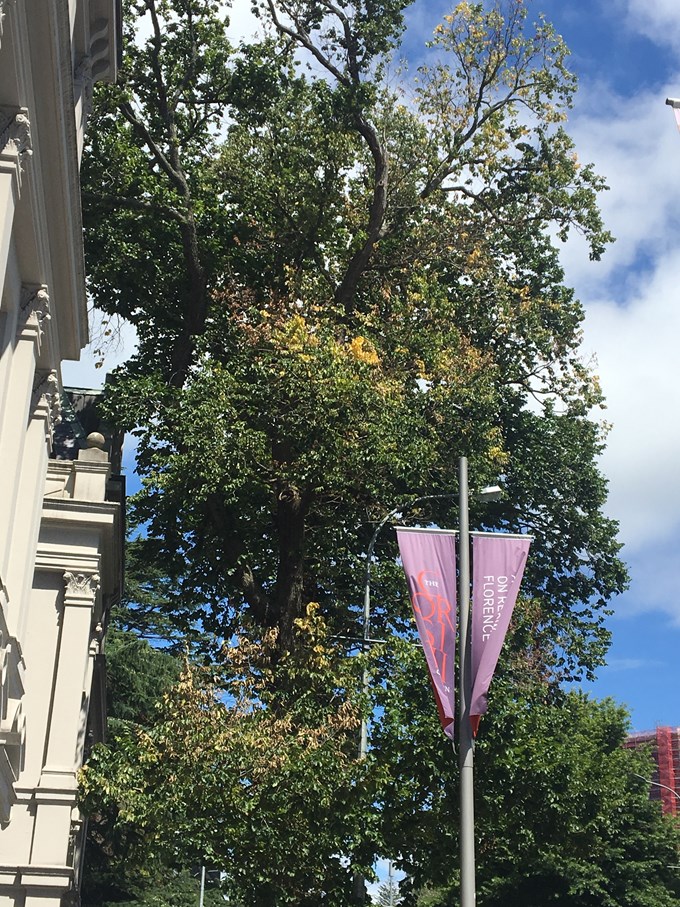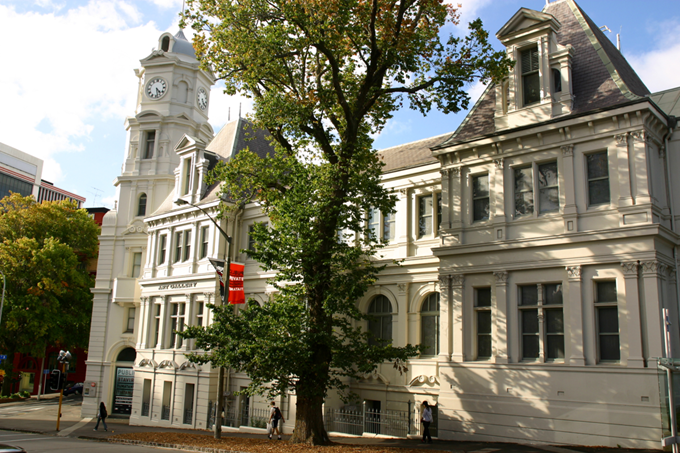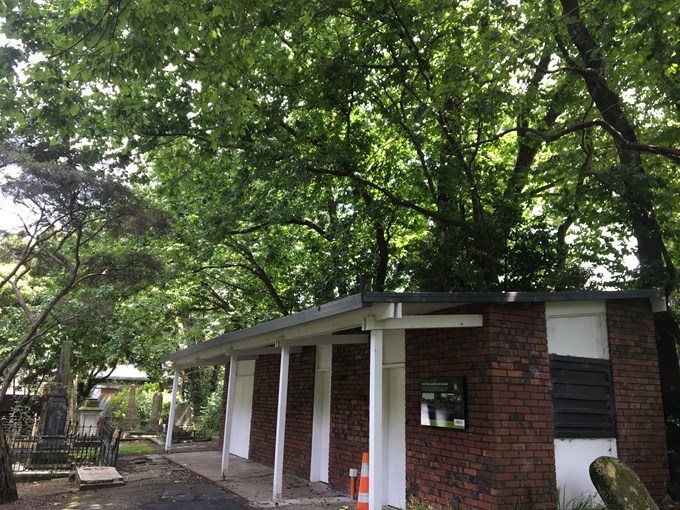Dutch elm disease has been confirmed on an elm tree outside the Auckland Art Gallery, and on a group of elms located within the historic Symonds Street Cemetery, in central Auckland.
The fungal disease can spread quickly through a tree and is almost always fatal. Under the Biosecurity Act 1993, it is classified as an unwanted organism and infected trees must always be removed to halt further spread of the disease, and prevent dying trees becoming a hazard.
Tree removals
Auckland Council arboriculture and eco specialist, Simon Cook, says it is disappointing to have the disease confirmed on some of Auckland’s landmark trees.
“There has been a lot of hard work go into managing the disease over the last few years, so it’s devastating that it has appeared on trees in two special central city locations," he says.
“While we are incredibly disappointed to have to remove these beautiful trees, we unfortunately have no other choice. We are committed to safety and respectfully removing the infected trees, then we will work to determine what may be suitable replacements.
“The disease is arbitrary in nature, making it difficult to eradicate, and as such our programme has focused on ongoing monitoring, followed by identification and removal of any infected elm material,” he says.
Auckland Council has arranged for the elm tree on Wellesley Street outside the Art Gallery to be removed this Sunday 25 February.*
Due to the significant and sensitive nature of the Symonds Street cemetery site, and the fact that several trees will need to be removed; a thorough methodology for the removal project is currently being worked through. The infected trees are located in the Presbyterian section of the cemetery.
Auckland Council will be engaging with and working alongside various affected community stakeholders throughout this process.
Watch out for any symptoms on your own trees
First found in Myers Park over the 1989/90 summer, the disease is currently restricted to the Auckland region. Recently, trees have become infected in larger numbers in central Auckland.
The disease is commonly spread by the scolytus multistriatus (elm bark beetle) carrying fungal spores from tree to tree but can also be spread through root grafting.
It is important for Aucklanders to keep an eye out for any symptoms and let the council know if they believe they have identified the disease.
“The sooner the disease is identified, the sooner the tree can be removed to prevent further spread, so watch out for any signs of wilting, curling, or yellowing leaves; or dying or dead branches on elm trees around Auckland. It is then the responsibility of the individual landowner to have the tree removed,” says Mr Cook.
Both the 10-year-Budget and Regional Pest Management Plan opening for public consultation on 28 February, propose a significant increase to environmental protection, as well as bringing in rules to protect Auckland against Dutch elm disease.
What is Dutch elm disease (DED)?
- It is caused by the fungus Ophiostoma novo-ulmi
- The disease is commonly spread by the scolytus multistriatus (elm bark beetle) carrying fungal spores from tree to tree but can also be spread through root grafting.
- DED is a destructive fungal disease and is almost always fatal once a tree is infected.
- It is critical that elm wood is not carried outside Auckland, especially as logs or firewood.
- Infected trees must always be removed to prevent the disease spreading further, and the wood must be mulched to prevent dying trees becoming a source of infection, or a hazard. In some areas, burning or burying elm material is an option.
- No storage of elm material is allowed.
How do I identify an infected tree?
- Elm trees are easily distinguished by their large leaves, which feature serrated edges, symmetrical veins, and an asymmetrical base.
- Watch for signs of wilting, curling, or yellowing leaves or dying or dead branches and trees.
- If you think you've found an infected tree, contain it and contact us immediately. You should not move elm material in the greater Auckland area.

*Note: Contingency date is Sunday 4 March



